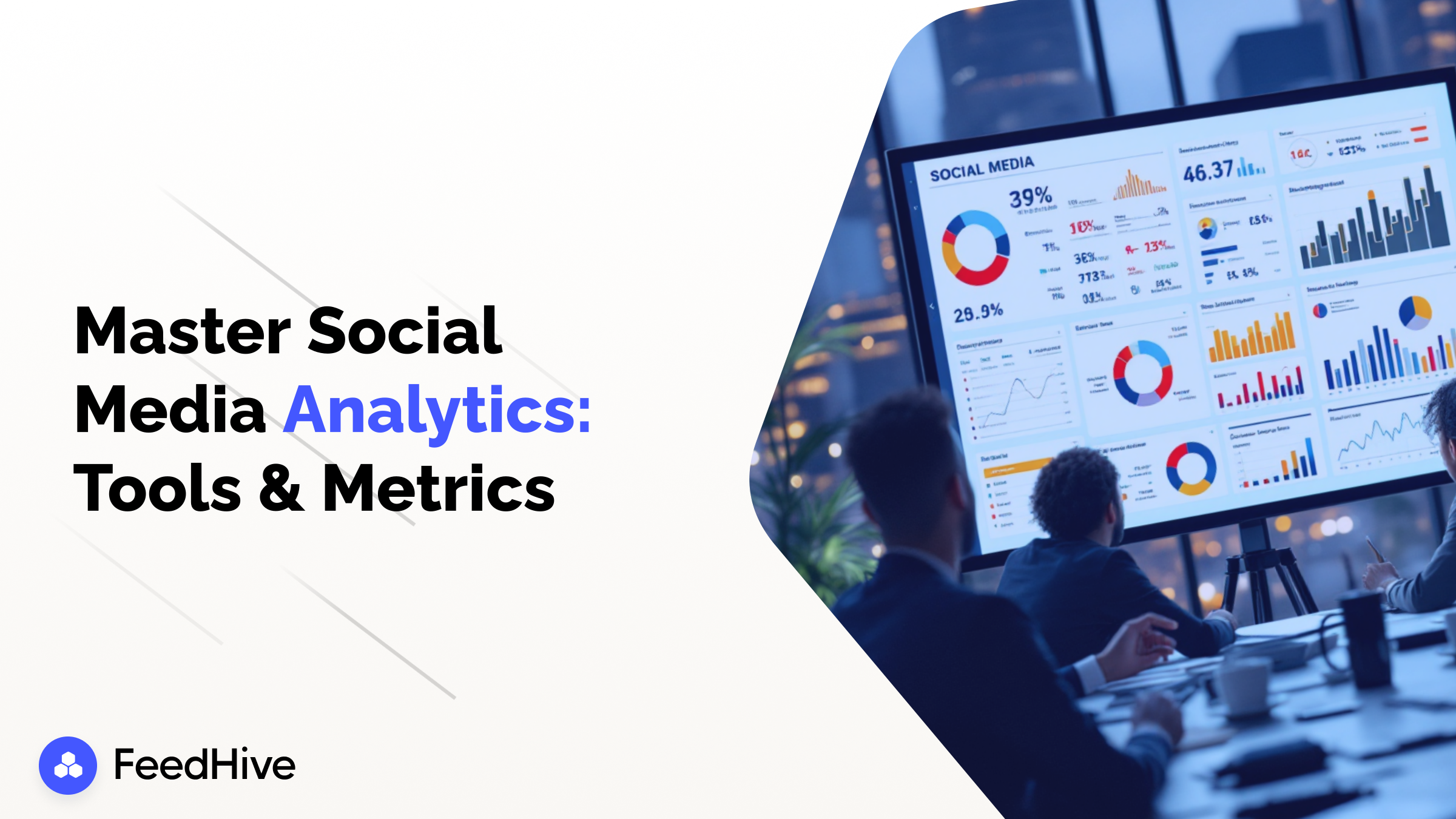
Social media analytics is evolving rapidly, driven by new user behaviors, emerging platforms, and breakthrough technologies. As brands venture deeper into 2025, understanding the critical metrics and the tools that underpin strategic decisions is more essential than ever. This guide delves into key performance indicators, advanced analytics tools, and practical strategies to decode social media data into actionable marketing insights.
Social media used to be all about posting content and hoping for engagement; however, the industry now demands a far more data-driven approach. In today's dynamic environment, brands need to adapt to a range of platforms and shifting digital behaviors. The explosion of user-generated content, live video, ephemeral posts, and AI-powered recommendation engines means that the landscape is no longer static. Advanced algorithms and data analytics now play a pivotal role in measuring campaign efficiency, tracking user behavior, and refining messaging in real time.
This evolution has given rise to next-generation tools and technologies that allow marketers to not only monitor the performance of their posts but also to interpret sentiment, measure real-time engagement, and benchmark against competitors. With platforms like FeedHive simplifying social media management, businesses can streamline content scheduling while simultaneously tapping into deeper analytics to refine campaign strategies.
In 2025, effective social media analytics relies on pinpointing the right KPIs that directly correlate with your brand's goals. Essential metrics include:
By consistently tracking these KPIs, brands can adjust their tactics on the fly and ensure that their strategies are aligned with evolving customer expectations. Research from Troy Digital highlights the importance of these metrics in staying ahead of competitors and anticipating trends in audience behavior.
A deeper dive into social media analytics isn’t complete without understanding who your audience is. Demographic data – such as age, gender, location, and interests – combined with behavioral insights, offers a granular view of your community. This allows brands to:
This granularity is crucial because it moves strategies from generic messaging to highly personalized campaigns. Brands can avoid wasting resources on poorly targeted content by pre-analyzing audience characteristics. Effective use of audience insights ensures that every piece of content is relevant and engaging, leading to better conversion outcomes and stronger brand loyalty.
Real-time data is invaluable for understanding immediate responses to your social media efforts. Platforms now offer instant feedback mechanisms that allow marketers to track metrics such as:
The ability to track these interactions in real time means that brands can optimize in-flight campaigns. For instance, if a post garners a sudden spike in shares and positive comments, marketers can amplify its reach by boosting its visibility or creating similar content in the same vein. Conversely, negative sentiment alerts can prompt swift corrective actions before minor issues escalate.
This level of detail in monitoring helps brands adapt rapidly to shifts in consumer preferences, ensuring that real-time changes are always aligned with broader marketing strategies.
The toolkit for social media analytics has expanded significantly, offering robust solutions tailored to modern needs. Notable platforms include:
Sprout Social: With its user-friendly dashboard and powerful reporting capabilities, Sprout Social allows competitive analysis and trend identification that fuel informed decision-making. (Source)
Hootsuite: Known for its comprehensive app integrations, Hootsuite supports bulk scheduling and content calendar tools while offering in-depth analytics to monitor campaign performance. (Source)
Buffer: This cost-effective tool focuses on core functionalities such as scheduling, publishing, and basic analytics, making it a favorite for smaller brands or startups. (Source)
Brandwatch: Specializing in social listening and competitive intelligence, Brandwatch provides deep insights into market trends and online discussions, aiding brands in understanding the broader sentiment landscape. (Source)
Zoho Social: Excellent integration with other Zoho products means that users can expect cohesive insights across multiple platforms, especially valuable for businesses looking to maximize budget efficiency. (Source)
Keyhole: This tool excels in real-time tracking with a strong focus on hashtag and keyword monitoring, a feature that proves essential for campaign-specific tracking. (Source)
Each of these tools offers unique features that can help brands extract detailed insights, ensuring that data-driven decisions are at the heart of social media strategies.
Analytics in isolation are simply numbers; the true power lies in interpretation and strategic application. Here are ways to transform data points into actionable strategies:
Interpreting data effectively ensures that resources are focused on strategies that yield measurable success. Each action, from content creation to scheduling, should be informed by the latest insights gleaned from these analytics platforms.
Real-world examples help illustrate how powerful analytics can transform social media strategies. Consider a few hypothetical but plausible success stories:
These case studies underscore the real-world impact of integrating data analytics into social media strategy, showcasing how insights convert into competitive advantages.
To truly master social media analytics in 2025, a structured approach to continuous monitoring is essential. Consider these best practices:
Staying vigilant with monitoring processes not only ensures that you catch early signs of declining engagement but also provides a continuous stream of data to inform incremental improvements over time.
As social media continues to morph into an even more dynamic battleground for consumer attention, the role of analytics will only grow in significance. By mastering key performance indicators, leveraging advanced tools, and interpreting data with precision, brands can secure a competitive edge well into 2025 and beyond.
The journey toward robust social media analytics is an evolving process that demands adaptability, continual learning, and proactive strategy adjustments. The brands that invest in understanding their metrics today are those best positioned to innovate and thrive in the fast-paced digital marketplace of tomorrow.